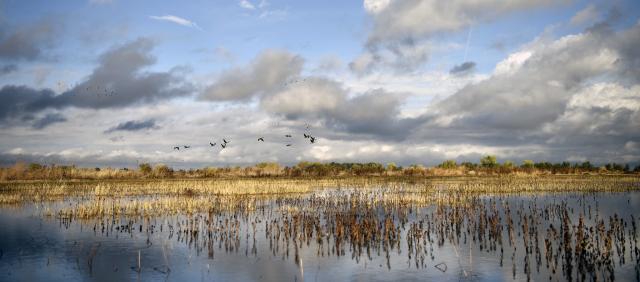President’s Investing in America agenda to invest $7.6 million in restoration work in California
Organization:
BLM Office:
Media Contact:
SACRAMENTO, Calif. – As part of the President’s Investing in America agenda, the Bureau of Land Management will invest $7.6 million from the Inflation Reduction Act for the protection and conservation of wildlife habitats and riparian area on public lands in California. This funding will be focused in a landscape area called the Cosumnes Watershed Landscape Restoration Area.
This funding is part of the BLM’s announcement to invest $161 million in ecosystem restoration and resilience on the nation’s public lands. The work will focus on 21 “Restoration Landscapes” across 11 western states, restoring wildlife habitat and clean water on public lands and strengthening communities and local economies.
These investments follow the release of the Department’s restoration and resilience framework to leverage historic investments in climate and conservation to achieve landscape-level outcomes across the nation. The Department is implementing more than $2 billion in investments to restore our nation’s lands and waters, which in turn is helping to meet the conservation goals set through the America the Beautiful initiative.
“Restoring the unique beauty and rich biodiversity of the Cosumnes River watershed is not just an environmental imperative, but a vital commitment to future generations,” said BLM California State Director Karen Mouritsen. “Thanks to funding from the Inflation Reduction Act, we can better safeguard this unique ecosystem, working hand-in-hand with our partners to ensure clean water, abundant wildlife and vibrant and sustainable communities.”
The Cosumnes is the last free-flowing river from the Sierra Nevada Mountains into California’s Great Central Valley, where it joins with the Mokelumne to form a matrix of wetlands, riparian forest, and natural floodplains, with upland oak woodlands, savannas and vernal pools. These lands form critical habitat for migrating and wintering birds, essential waterways for native fish, and important social and economic benefits for Valley communities. The BLM manages crucial acreage in the Cosumnes River Preserve in cooperation with 11 partner organizations. It is home to the state’s largest remaining riparian oak forest. Restoration investments will improve hydrologic function and landscape connectivity, control invasive species, and reduce hazardous fuels, ensuring this remarkable preserve is protected for future generations.
Efforts in these restoration landscapes will improve the health of public lands that are being significantly degraded by invasive species, unprecedented wildfire events, unregulated use, and climate change. With these investments, landscapes will be better able to provide clean water, habitat for fish and wildlife, opportunities for recreation, and will be more resilient to wildfire and drought.
Resilient public lands are critical to the BLM’s ability to manage for multiple use and sustained yield. Once-in-a-generation funding from the Inflation Reduction Act will be directed to landscapes where concentrated, strategic investment through partnership can make the most difference for communities and public resources under the BLM’s management.
President Biden’s Investing in America agenda is growing the American economy from the bottom up and middle out – from rebuilding our nation’s infrastructure, investing in nature-based solutions, and driving over $470 billion in private sector manufacturing and clean energy investments in the United States, to creating good paying jobs and building a clean energy economy that will combat climate change and make our communities more resilient. The funding announced today complements the $802,800 of funding these areas have received from the Bipartisan Infrastructure Law.
Learn more about the BLM’s restoration landscapes at BLM’s StoryMap.
The BLM manages about 245 million acres of public land located primarily in 12 western states, including Alaska, on behalf of the American people. The BLM also administers 700 million acres of sub-surface mineral estate throughout the nation. Our mission is to sustain the health, diversity, and productivity of America’s public lands for the use and enjoyment of present and future generations.

